

Positioned in northeast Canada, Hudson Bay is a large inland sea bordering the regions of Manitoba, Quebec and Ontario. Many smaller islands and other prominent ones like Baffin and Southampton surround the second largest Bay on earth after the Bay of Bengal.
Hudson Bay is connected to the Labrador Sea and the Atlantic Ocean via the Hudson Strait. It was discovered in the 16th century by an explorer named Henry Hudson. King Charles II gave an exclusive trading right to the Hudson Bay Company which established a monopoly in the regional fur trade. In fact, the oldest settlements and harbours along the Hudson Bay coast came up as company trading posts.
Today there are a dozen settlements and seven ports on Hudson Bay, the largest being Port Churchill.
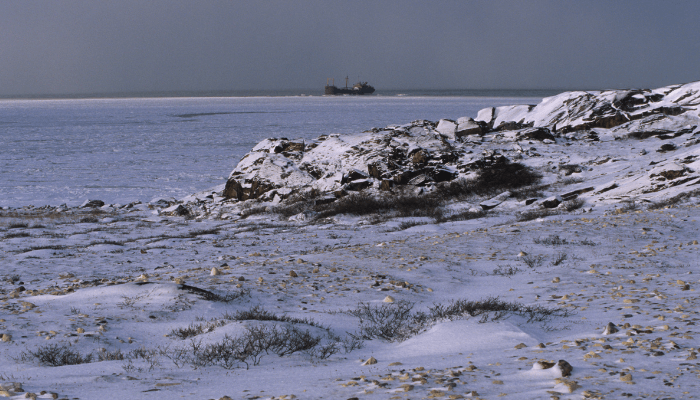

A principal port on the Hudson Bay coast, Churchill has led to the economic growth of North Canada since its opening in 1931. The major export commodity is grain and cereal, however, attempts have been made to diversify its business by handling varied types of cargo.
Today the port comprises four deepwater berths with a draft of 17 m, capable of handling Panamax size ships. It is strategically positioned for capturing new businesses in future. The port accommodates tanker vessels, container carriers and general cargo, manufactured goods, mining products, forestry goods etc.
The only Canadian Arctic port linked to railways, it is connected to the Hudson Bay railway network which traverses Pas and even Manitoba. The port is equipped with three-railcars tracks with a 900-tonne unloading capacity per hour.
It is located close to Canada’s grain-producing areas and is equipped with a cleaning system. Machinery at the grain terminal can efficiently clean wheat and other cereals at a speed of 600 tonnes per hour. 200 tonnes of Canola is processed in forty minutes.
It has a natural well-protected harbour connecting the facility to the North Atlantic Ocean via the Hudson Strait. Churchill port is not linked to the national road network and all goods are distributed to inland areas via railway.
After the government’s Wheat Board Monopoly ended, the port was closed in 2016. Farmers could sell their products to any trader while shipping companies were free to transport their commodities through other Canadian ports.
It resulted in losses for the government however the port and its supporting infrastructure were bought by Arctic Group in 2018. They repaired the railway line and upgraded infrastructure which reduced the freight transportation costs. After remaining defunct for almost two years, it was opened in September 2019.
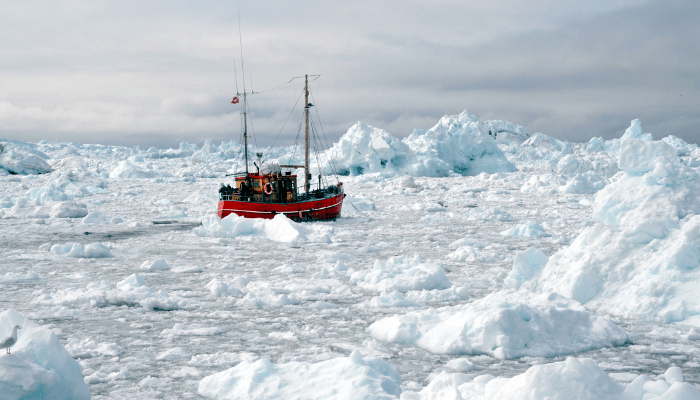

Lying along the banks of River Innuksuak, Inukjuak is a small village situated at the mouth of the Hudson Bay. With a minuscule population of 1821, as per the 2021 census report, this northern village in Quebec was once an important trading post called Port Harrison.
The settlement is famous for the many archaeological sites located nearby. Home to the Inuit people for thousands of years, the landscape is marked by lofty hills, snow-clad valleys and frozen rivers, making life difficult but pleasing at the same time; as explained by many of the region’s inhabitants.
Inukjuak is a traditional village frozen in time, rooted in its past. However known for its beauty, the small port and the Hopewell Islands, it is gradually gaining popularity as a unique tourism destination. One can visit the Daniel Weetaluktuk Museum for admiring the Inuit artefacts, traditional tools and hunting gear. Hopewell Islands serve as a breeding ground for a plethora of migratory bird species.
Since the earth is covered with permafrost, it is not easily accessible through roads which are closed during the harsh winter. However, boats carrying people to the tiny village in summer have become a common sight.
The port has a 180 m long pier, capable of accommodating two vessels at once. It is used for receiving consumer goods, canned food and grains from the mainland since the region is uncultivable and depends on the outer world for fulfilling its food requirements. Handicrafts like handmade jewellery, fur mats, coats, woollens etc, made by Inuit people are exported from here.
Port History
The port was founded in the 20th century by a French trading enterprise that exported fur to Europe. Soon, the Hudson Bay Company also established its presence in the area. In 1936, HBC bought the nearby lands, maintaining a monopoly in trading fur till the 1950s.
The trade declined in subsequent years with periodic interventions of the government and finally, the company shut its operations. In the 1960s, the authorities opened hospitals, primary schools, and post offices, transforming the region into a planned municipality. Throughout this period, the indigenous people continued to live a traditional lifestyle and settled in the village much later.
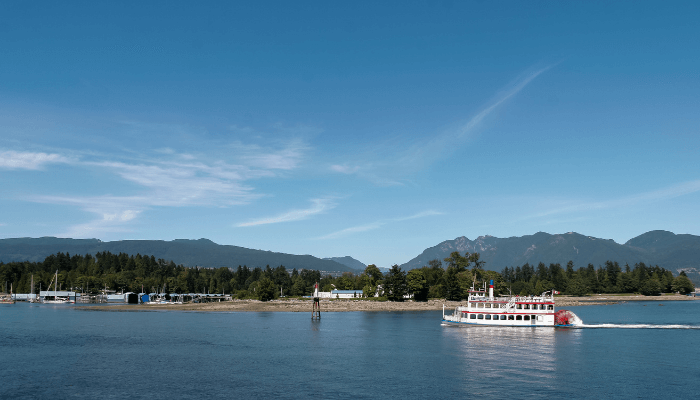

Situated on Southampton island, at the northern tip of the Hudson Bay, Coral Harbour is a famous place named after the fossilised corals found in South Bay waters. Also known as Salliit in the Inuit language, it is a paradise for wildlife enthusiasts. The region has functioned as a strategic trading post since times immemorial.
Settled by Inuit hunting tribes, invaded by Scottish whale hunters, and exploited by the fur traders of Hudson Bay, Coral harbour was also a military post in the past. Today, the region is famous for its abundant marine life.
The small harbour is mostly frozen and remains operational for a short period during the peak summer. Resupply barges visit the port from Churchill, Manitoba, carrying essential supplies of fuel and food. People can reach the island by airways or by small boats. Locals are welcoming and one can enjoy skiing, and explore the terrain on a snowmobile or a dog sledge.
The region has many attractions like the 16 miles brook. A picnic area, it is also a nesting ground for owls and ideal for fishing. Located a few miles from the harbour is the bear island known for its limestone formations. One should not miss the boat tours to Coats island, home to numerous species of walruses, seals, polar bears etc. The Harry Gibbons Bird Sanctuary is a must-visit for spotting the snow geese, black guillemots and tundra swans.
Just 16 kilometres from the Coral harbour airport lies the Fossil Creek, famous for swimming and known for coral and shell fossils dating back to a million years.
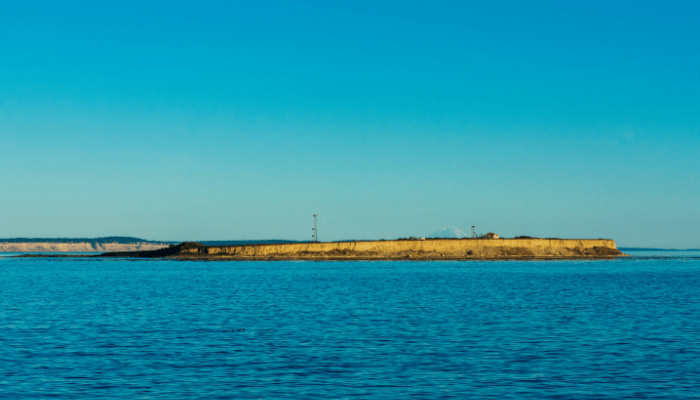

A sparsely populated island in the Qikiqtaaluk Region of Nunavut, Smith Island is visited by tourists and locals residing on nearby islands. Its harbour is ideal for receiving small vessels and fishing boats. Close to Frobisher Bay, the nearest settlement is Iqaluit located southeast of the island. Its port is used for receiving manufactured items, consumer goods, fruits and vegetables.
The region has many communities such as the Arctic bay. Facing the Baffin island, this traditional tribe lives in small huts running along the shore of Adams Sound leading to the Northwest Passage.
Its sheltered harbour and narrow cliffs offer the perfect breeding habitat for numerous arctic bird species and the waters hold the narwhals and bowhead whales, walruses and penguins. The community organises the annual dog sledging race in spring that attracts people from all over Nunavut and even Manitoba.
The Kinngait people are skilled artists inhabiting the region for over three thousand years. Their whale bone carvings and hand-carved blades are known for high craftsmanship. Close to their dwellings are the Mallikjuaq park and the famous Sam Ford Fjord. Naturalists and intrepid travellers can visit the community and experience their culture.
A nearby settlement called Igloolik hosts the famous Walrus festival each year. Tourists can book adventure tours and go skiing, whale watching or simply enjoy the breathtaking northern lights. Pangnirtung is another community known for the superior quality of handmade tapestries and design prints.
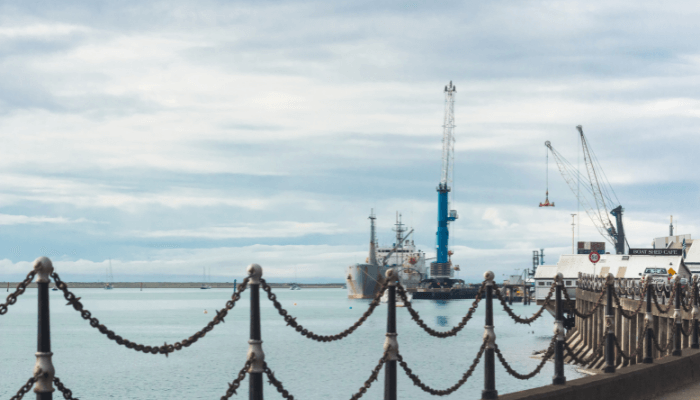

Nelson port is an abandoned facility located on the Hudson Bay along the banks of River Nelson. It housed over a thousand people in the 20th century but today it is completely deserted and non-operational. Hayes river flows close to the port and the York manufacturing unit.
It was founded by a Welsh explorer called Thomas Button who arrived on its shores in 1612. He named it after his ship’s captain who was buried on the coast. From the 17th to the 20th centuries, the harbour was used for exporting fur by the Hudson Bay Company.
In 1905, the government chose port Nelson for shipping grains produced in the Central Canadian region. It was decided to be a terminus for the Hudson Bay Railway network; however, this dream never came true. The main wharf and port buildings were built in 1915-16, along with a wide steel bridge however the engineers realised the need to redesign the wharf as the fast-flowing Nelson river carried silt and deposited it in the harbour.
After the Second World War ended, the authorities lacked finances and political support, hence the site was left as it was. Commercial shipping activities in the region were concentrated in Churchill port.


Tavani was once a trading post and a mining town in the Kivalliq region, Nunavut. Also called Tavane, it is situated on the Hudson Bay about 31 kilometres from the village settlement of Whale cove, known for its intricate whale-bone handicrafts.
It was founded in the 1920s by a mineral company, the Dominion Explorers Limited. The company explored the Hudson Bay coastline and found abundant limestone deposits which were shipped from this port to mainland Canada. Soon the company sold its operating units to the Prodson Bay Enterprise in 1929. Today, the region is thinly populated and has a few houses including an administrative building.
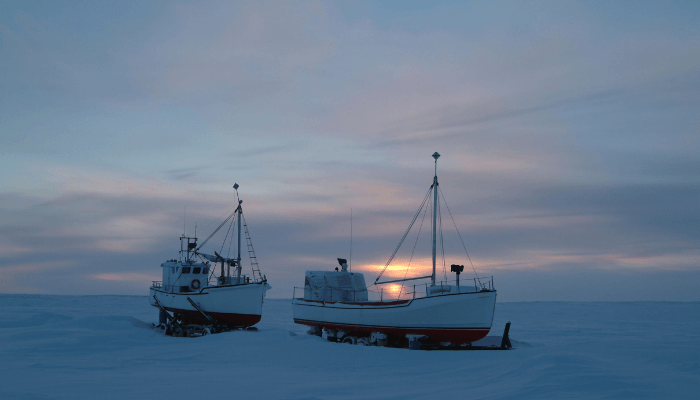

Lying four kilometres from the Bay of Povungnituk, this harbour is positioned near the mouth of the Hudson Bay. Plateau and low hills surround the area, supporting diverse flora and fauna. It is famous for the annual migrations of the leaf river reindeer herd.
Many folktales are associated with the place whose name means ‘smell of rotten meat’. According to the 2000 locals living in the region, the place was named so because of a deadly epidemic in the 19th century that wiped out the entire population. There was a lack of space for burying corpses which lay in the open, emitting a foul odour like rotting meat, hence its name. Another folk tradition associates the name with the reindeer who is revered by the Inuit.
The Hudson Bay Company founded a trading port in Puvirnituq in 1920. A small wooden pier was constructed and several camps for Inuits who arrived for selling fur and woollens. In the 1950s, more buildings and houses came up.
A small trading hub on the Hudson Bay coast, this settlement also has an airport which serves as a connecting point to nearby isolated communities. The locals also celebrate a snow festival to honour their traditions and nature spirits.
Disclaimer: The authors’ views expressed in this article do not necessarily reflect the views of The Marine Learners. Data and charts, if used, in the article have been sourced from available information and have not been authenticated by any statutory authority. The author and The Marine Learners do not claim it to be accurate nor accept any responsibility for the same. The views constitute only the opinions and do not constitute any guidelines or recommendations on any course of action to be followed by the reader.










We believe that knowledge is power, and we’re committed to empowering our readers with the information and resources they need to succeed in the merchant navy industry.
Whether you’re looking for advice on career planning, news and analysis, or just want to connect with other aspiring merchant navy applicants, The Marine Learners is the place to be.